People love an unsolved mystery—especially one far enough in the past as to allow wild speculation. Has there been a case that’s invited more outlandish theories than Jack the Ripper’s? The combination of grotesque details, gaslit setting, creaky conspiracy theories, and the eerie suddenness of the murders onset and ending have all lead to hundreds of retellings. Some of the most interesting have been stories that careened straight into the uncanny, giving us Jacks who can travel through time, haunt bridges, and possess wax figures.
Perhaps the writers of the tales below couldn’t bring themselves to believe that such a monstrous man was entirely human? Whatever the root of the fascination, we’ve stalked the Ripper straight out of the alleys of Whitechapel and into these eight SFF tales.
Star Trek, “Wolf in the Fold”
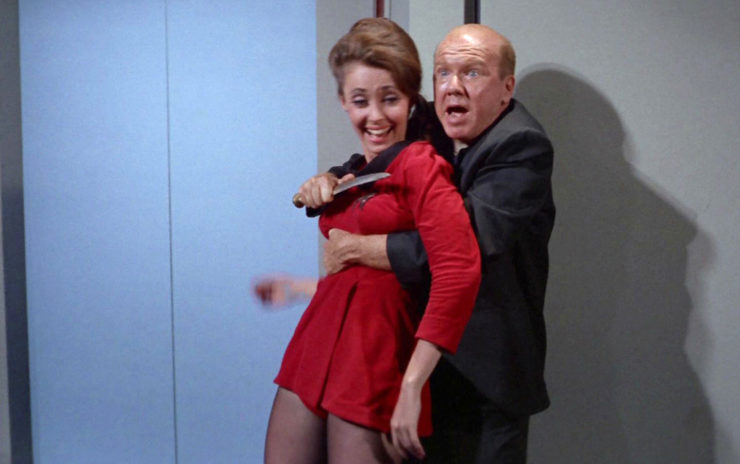
This episode of original Trek was penned by Psycho scribe Robert Bloch, and presents a common reimagining of the Ripper’s crimes—faced with such horrific deeds, plenty of writers seem to take comfort in the idea that Jack the Ripper couldn’t possibly be human. In this case, he’s an alien being of pure energy that sustains itself on the fear of other species. The crew of the Enterprise only figure this out when Scotty is accused of murdering a random denizen of Argelius II, and no one is prepared to believe it. Why does the being seem intent on going after women in all of these killings? Well, according to Spock it is because women feel fear more keenly than men. Yes, friends, this is a thing that the Science Officer of James T. Kirk’s crew states as fact. (You could ask why the being bothers with killing, as that has the unfortunate effect of cutting off its food supply, but that would be far too rational for this episode.) And how do you stop alien Jack the Ripper who feeds on fear when it’s lodged itself into your starship computer banks somehow? Oh, that’s easy—you tranq the crew.
Seriously, though, that is the solution. They tranquilize the entire Enterprise crew so none of them are cogent enough to feel fear, enabling Kirk and Spock to drive the being off the ship and disperse it into space, effectively killing it.
Fantasy Island, “With Affection, Jack the Ripper”

For anyone who doesn’t know what Fantasy Island was: it was a very glossy, very ’70s TV series about an island where—due to some supernatural handwaving—guests could have literally anything they wanted. Their hosts were the impossibly suave Mr. Roarke, played by Ricardo Montalban, and the impossibly sweet Tattoo, played by Hervé Villechaize. The guests would arrive in a cloud of Brut, feathered hair, and yachting apparel, learn a lesson from their fantasy, and go home wiser. For some reason, this show—this show—decided it needed to have a take on Jack the Ripper. A criminologist goes on a vacation to Fantasy Island—a place where, once again, you can have anything you want, a concept which is baked right into the title—and decides that what she wants is a portal that will take her back to Victorian London so she can research her theory about the Ripper’s identity. Which, on the one hand, I don’t want to yuck anyone’s yum, and I respect a dedicated researcher. But on the other hand? If you already have a time portal why not use it to save the victims? Instead, our protagonist confirms her theory and returns to 1980— where presumably she won’t even be able to convince anyone she’s right given that she had to use time travel—until the Ripper chases her into the portal. Luckily Mr. Roarke isn’t about to let an atemporal icon of murder besmirch his reputation for guest services.
The Angel of the Crows by Katherine Addison
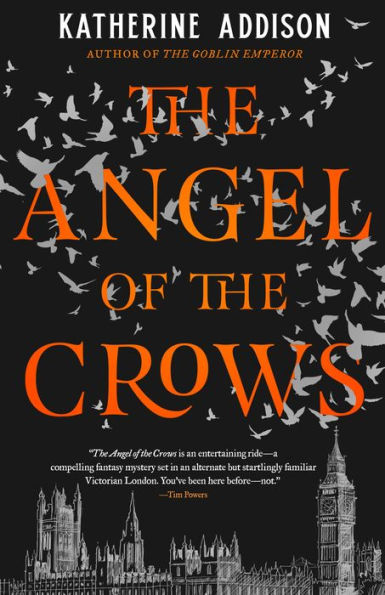
The Angel of the Crows is many things—a quirky detective story, a Sherlock riff, a gaslit urban fantasy, and a cosmological fantasy. Our detective, called Crow, is an angel in a world where angels live among men. Bound by harsh laws, they can only claim identity and selfhood if they’re attached to a particular building, be it a public house or a hospital. To lose your home is to lose your self, to Dissolve into nothingness, or to Fall, and become monstrous. But it seems Crow has found a loophole. He roams the city solving crimes for the ever-inept Scotland Yard, assisted by his friend and flatmate, Dr. Doyle, recently returned from fighting the Fallen in Afghanistan. And of all their investigations, from revenant highwaymen to a clairvoyant girl’s stolen treasure, there is none that vexes them so much as the Whitechapel Murders. Why is the killer doing such horrific things to the women he kills? And how is it that there are no eyewitnesses, no traces left, nothing at all to go on? Has the Ripper once again proved so uncanny that it will take a pair of supernatural freelance detectives to save London from his crimes?
Buy the Book


The Angel of the Crows
Kolchak: The Night Stalker, “The Ripper”
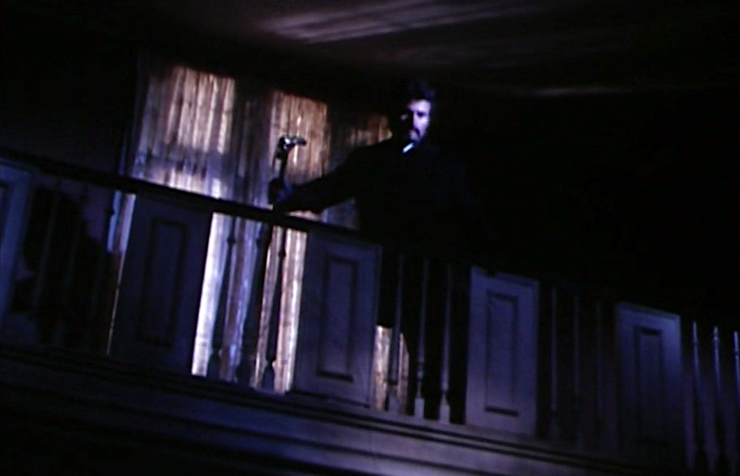
The very first episode of Kolchak: The Night Stalker went to the Ripper well, with Carl Kolchak tracking a killer who seems to be following a familiar script. The killer terrorizes 1970s Chicago, stalking exotic dancers and masseuses with a sword cane, sending terrifying nursery rhymes in to the paper to mock his victims and imply that each murder is making him stronger. Kolchak is the only one who makes the connection with the original Ripper…which means he’s the only one who understands that the killer is a supernatural entity rather than an arrestable human person. The police have no patience for his insane theory, and his boss just wants him to shut up and fill in for their advice columnist, Miss Emily—but Kolchak knows he’s the only one who can stop the Ripper from fully incarnating. This leads to the kind of wacky hijinks that can only ensue when a rumpled beat reporter tries to take on an immortal killer.
The League of Extraordinary Gentleman by Alan Moore
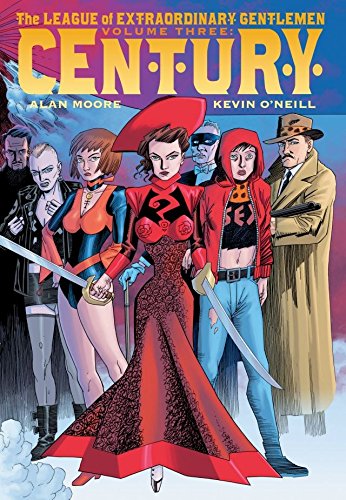
If you’ve read any part of the The League of Extraordinary Gentlemen, you’ll know it’s kind of like a Marvel Cinematic Universe of Adventure Lit, where (mostly British) book heroes team up for the sake of saving the world and so on. You probably also know that Moore had already tackled Jack the Ripper in his graphic novel From Hell, which carefully tracked the Ripper’s entire history and made some assertions of its own. Combine these two knowledge bases and you get what Moore did with the Ripper history in the third volume of League comics—a fellow named Jack MacHeath, who is a descendant of The Threepenny Opera’s Mack the Knife, and suspected to be the real person responsible for the Ripper murders. Thomas Canacki (an occult detective created by William Hope Hodgson) has visions of a future full of death, and Mycroft Holmes is fairly certain that MacHeath will be responsible for the future, should it come to pass. This all goes incredibly sideways when it’s revealed that MacHeath isn’t actually the Ripper: the Earl of Gurney confesses to the crimes, and MacHeath is set free, despite being a murderer too.
Buy the Book


The League of Extraordinary Gentlemen: Century
The Twilight Zone, “The New Exhibit”
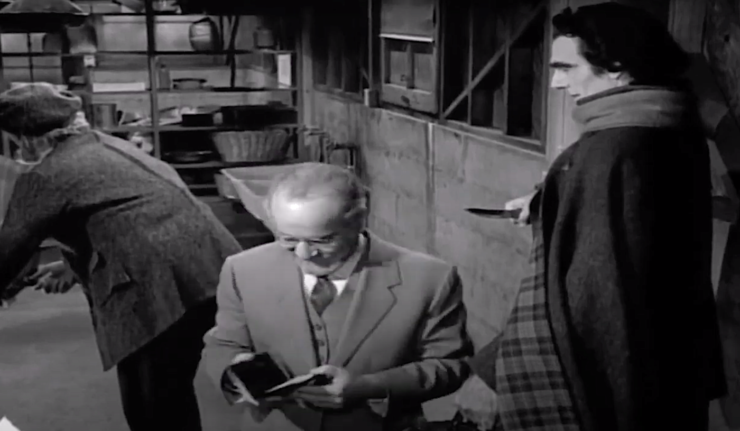
It would be weird if Jack the Ripper didn’t show up on The Twilight Zone. For an extra layer of creepiness they set their take in a failing wax museum. Martin Lombard Senescu works in his friend Ferguson’s wax museum, and especially loves the murderers row exhibit, featuring Albert W. Hicks, Henri Désiré Landru, Williams Burke & Hare, and, of course, the Ripper. The fact that this is Martin’s favorite exhibit probably tells us something about him, but the episode treats him as a nice, mild-mannered guy. Rather than throw the figures away, he stores them in his basement while his friend looks for a buyer, thus annoying his wife, who, in a fantastically Twilight Zone detail, isn’t pissed that there are serial killers in her house—no, she’s mad about the air conditioning bill. We assume it isn’t spoiling anything to say that the figures are more than they seem?
Time After Time
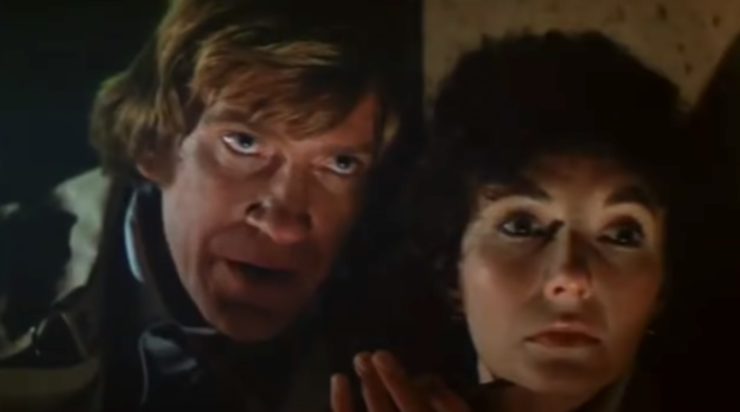
How about a version of Jack the Ripper who was pals with H.G. Wells? In this film (based on Karl Alexander’s novel), ol’ Herbert G. shows a dinner party the time machine he built, with a special key that prevents the user from getting stranded in another era. His friend, surgeon John Leslie Stevenson, misses that part of the presentation and takes the machine to the future to escape being caught by the police for his many heinous murders as Jack the Ripper… but the machine comes right back because he doesn’t have that handy key. Herbert heads into the future to find him, only to discover a planet blighted by war and harmful technologies; Stevenson is loving it in 1979, claiming that he’s an amateur at violence when compared to the horrors of the 20th century. That doesn’t stop him from murdering again in earnest, which is distressing to Herbert given that he’s responsible for the creation of the machine that led to this mess, and also the fact that he’s developed a crush on a bank worker named Amy Robbins who Stevenson threatens in the hopes of scaring Herbert off. Herbert and Amy avoid death at the hands of the newly christened “San Francisco Ripper”, sending Stevenson reeling through time without a capsule thanks to another handy mechanical wink-nudge machina. Then they head back to Wells’s time period together… which is odd, because it’s a bit hard to believe that a woman who enjoyed the benefits of women’s lib would be all that excited about living in the Victorian era.
Bridge Across Time
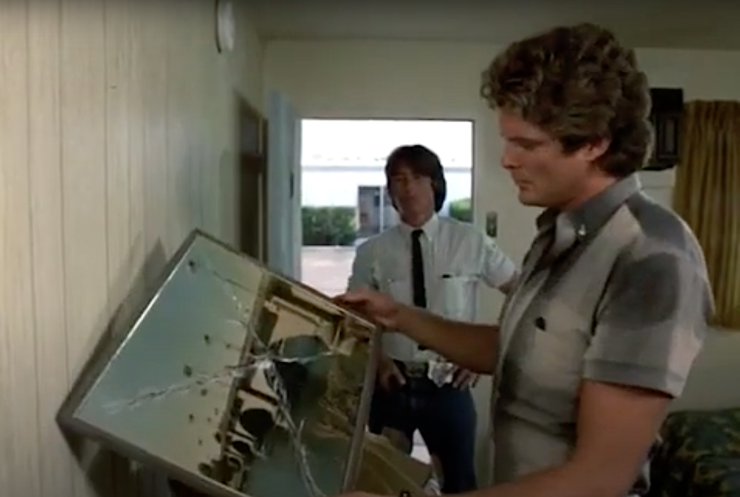
The Made-for-TV movies of the 1980s are a goldmine of creative storytelling and preposterous leaps of logic, but Bridge Across Time might be the greatest of them all. Its springboard is a tiny, weird piece of history: in the late 1960s, the founder of Lake Havasu City, Arizona, bought the London Bridge and brought it to the U.S. to create a tourist attraction for his new town. That’s already pretty cool! But this movie dares to ask: what if one of the foundation stones of the London Bridge contained the evil spirit of Jack the Ripper??? This is also pretty cool. But where this movie becomes legend is when it pits the Ripper against a Lake Havasu police officer, who is played by none other than David fucking Hasselhoff.
Our money’s on the Hoff.
We know this is but a brief sampling of the Ripper stories available out there—let us know your favorites in the comments!
Originally published July 2020.










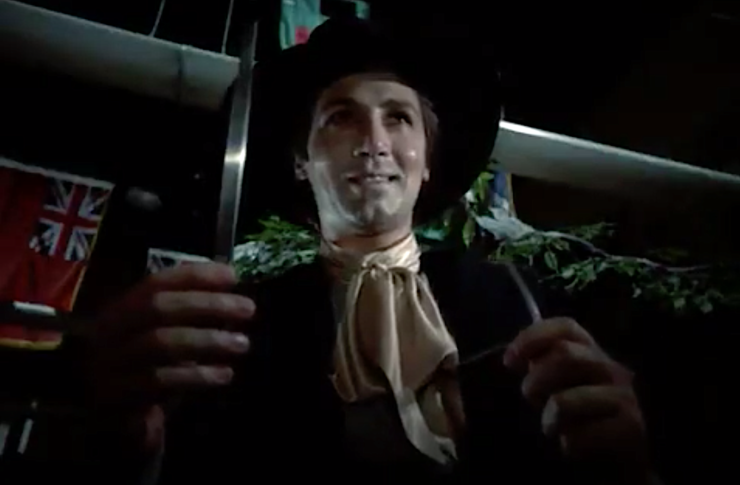
Babylon 5, “Comes the Inquisitor”, where it turns out the Vorlons had a … purpose … for Jack.
In Jodi Taylor’s time-travel novels there’s a brief cameo for alien incorporeal Jack which is really creepy… People
Sanctuary’s take, by far the best.
I have to bring up Roger Zelazny’s A Night in the Lonesome October (1993) if we’re looking at takes on Jack the Ripper. Few stories make Jack the protagonist and make the reader happy about it but RZ pulls it off brilliantly, especially in using Jack’s canine friend Snuff as the narrator.
Jack the Ripper was involved in several episodes of Grimm, in which he was a possessing spirit. I’m sure I’m forgetting more…
Agreed with MRush on Sanctuary‘s version.
—Keith R.A. DeCandido, who thinks there needs to be more Christopher Heyerdahl just in general….
Record of Ragnorak is a great manga in which the best of the gods battle the strongest of humanity to determine the fate of the human race. Jack the ripper vs. Hercules is a thing that happens.
@@.-@. MattS
You beat me to it Zelazny is one of my favorite authors and A Night in the Lonesome October is one of my favorite stories by any author. To anyone who hasn’t read it, it’s a fun snarky romp of a read that has so many cameos it’s hard to keep track. And I reread it every Halloween
Zelazny is one of my favorite authors and A Night in the Lonesome October is one of my favorite stories by any author. To anyone who hasn’t read it, it’s a fun snarky romp of a read that has so many cameos it’s hard to keep track. And I reread it every Halloween
PS: I’m sure everyone has read Gaiman’s short story Study in Emerald but just in case someone out there hasn’t, it has an interesting twist on the whole Ripper case
Edited to agree with @6. krad about needing more Christopher Heyerdahl in everything
I like the pair of stories in Ellison’s Dangerous Visions: “A Toy for Julliet” by Robert Bloch (who did fair business in Jack the Ripper) and Ellison’s own sequel to Bloch’s story, “The Prowler in the City at the Edge of the World.” . It’s fair to mention that Moore and Campbell’s From Hell could also be counted as SF/Fantasy, given how disorienting the flash-forwards in time are and its thesis that Jack is a social contagion and it doesn’t matter who he was (He certainly wasn’t William Gull).
“Yours Truly, Jack The Ripper” by Robert Bloch is an old favourite of mine.
@1 B5’s version is interesting in that it’s the only one I know where Jack is post-Ripper. In all the others, when he appears in a new setting, he sets right down to the same old business (well, Zelazny has him in the original setting, doing the same business but in a different light). That makes sense–you’ve got to have some reason to bring Jack in to your story and if it’s *not* to be the Ripper, what is it?
Zelazny has him being the Ripper but for a good cause, B5 has him to show something more of what the Vorlons are like.
A pair of British films, A Study in Terror (1965) and Murder by Decree (1979) have the Ripper mythos meeting that of Sherlock Holmes. An inevitable intersection, of course.
(Curiously enough, a company set up by Arthur Conan Doyle’s estate was involved in the production of the first film.)
@1 beat me to it, with Babylon 5 and Comes the Inquisitor. Babylon 5 is my all time #1 favorite US science fiction series (The Prisoner is #1 overall), but my impression was that JMS just tacked the bit about The Inquisitor being Jack on as an afterthought. The series was exceptionally well written, and this was a decent episode, but nothing he did when he was Inquisiting related to anything that Jack was thought to have done. It didn’t play like JMS had intended The Inquisitor from when he conceived of the episode.
Time after Time is the class act, here.
I’m surprised nobody else has mentioned Kim Newman’s _Anno Dracula_, which drops the Ripper murders and investigation into a London ruled by Count Dracula himself.
There was an episode in Arthur Conon Doyle’s Lost World series that attributed the killing’s to 3 of the more favored suspects working together. I don’t recall how they ended up on the plateau in South America. But in that series it seemed that just about the whole world ended up on the plateau at some time or another (just like most of the alpha quadrant ends up on Voyager’s path in ST:Voyager).
BRIDGE ACROSS TIME wins, hands down in a first-round decision, the title of ‘Most Beautifully OTT Ripper Mystery’ ever: I will never, ever dare to actually watch it because how can mere mortal cinema live up to the Divine Madness of that set-up?
Also, with respect to TIME AFTER TIME, our Heroine might well be going back in time to ‘meet the family’ rather than spend the rest of her life there … at least one hopes this will be the case.
Time After Time is one of my favourite films, its somewhat questionable premise made perfectly palatable by the wonderful performances of Malcolm McDowell, (the inimitable) David Warner, and Mary (sigh) Steenburgen. At the end of the film, there’s a note: “H.G. Wells married Amy Catherine Robbins, who died in 1927. As a writer, he anticipated Socialism, global war, space travel, and Women’s Liberation. He died in 1946.”
Apparently, Wells did not treat Amy as well as one might have hoped, given that she travelled back to the 19th century to be with him. He had a number of affairs; whether Amy shared his views on Free Love, I have no idea.
McDowell and Steenburgen fell in love during the filming, and were married for 10 years.
@0: Spock’s buying into female emotivity was hardly exceptional for the time; that was a few years before Harvard psychology professor Richard Herrnstein “proved” that non-whites were intellectually inferior. (Emphasize those quotes — he didn’t even publish in a scientific journal, appearing instead in Atlantic.) ISTM it’s also typical of the show; people talk about how progressive OST was, but in perspective its attitudes on women are anything but. (Just look at the alleged uniform the crewwoman is wearing….)